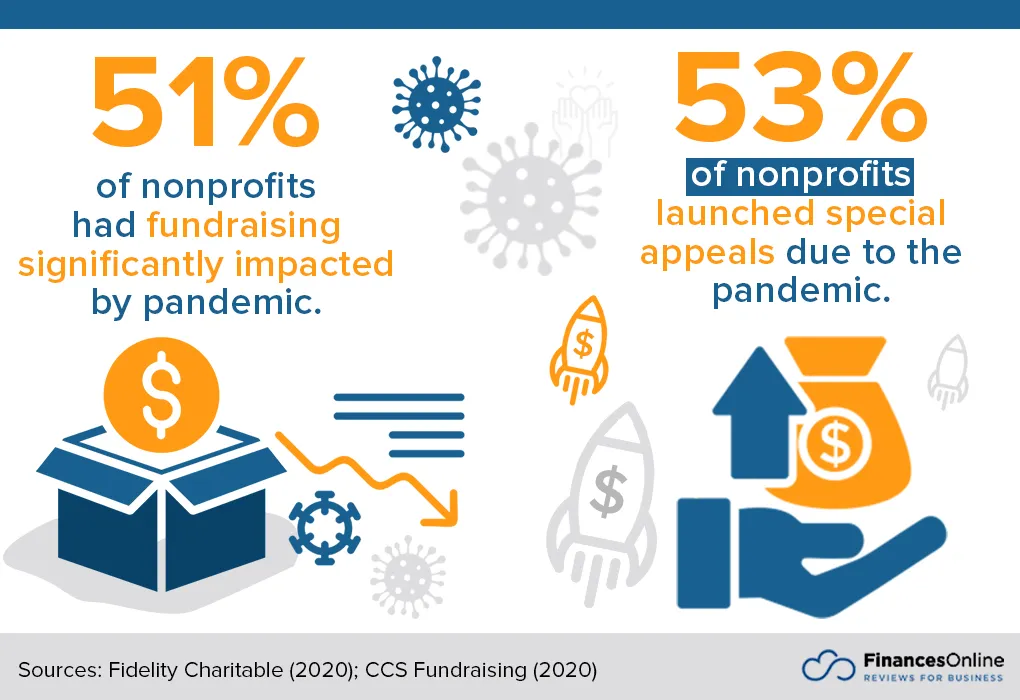As a nonprofit organization, you want the same thing your funders want, and that is for your cause to receive as much of your funds as possible.
But, delivering your nonprofit's mission isn't free. There are always essential administrative and operational costs associated with carrying out your mission, and it's these indirect costs that have funders and nonprofits in this endless dispute.
For a long time now, enlightened grantmakers and donors have recognized that administrative costs are crucial to ensure that charitable nonprofits are financially sustainable. They no longer believe that lower overhead equates to higher effectiveness.
In fact, the entire industry agrees that a new metric is required to gauge nonprofits' efficacy.
And, in the meantime, some nonprofit leaders are already implementing ways to bust the overhead myth, such as:
- Fostering more discussions about overhead and educating funders and the Board of Directors about how unreasonable overheads have damaging consequences so they can set realistic expectations.
- Focusing more on their mission impact and using enhanced storytelling and better metrics as a way to overshadow the minute details of how their nonprofit spends its money so they can shine the spotlight on their organization's effectiveness.
- Sharing more data, not less, so funders have more than one metric (overhead) to consider. They measure things such as people helped or served, volunteer hours, cost per person helped, visitor/member counts, satisfaction ratings, total program costs, etc.
These are just a few of the many ways you can start to fight to ensure that your organization's business outcomes aren't overshadowed by the discussion around overhead.
But, in the meantime, nonprofit leaders still want low overhead, so here are 5 effective strategies you can implement right now to keep nonprofit overhead costs at a minimum while investing in capacity building for a more sustainable organization.
Use Time Tracking Apps and Software
There are many ways to lower your nonprofit's overhead without sacrificing the effectiveness of your work.
But, one of the biggest changes you can make is in time tracking.
The right time tracking software will allow you to significantly decrease costs by helping you achieve the following:
- Accurately tracking employee time
- Categorizing employee time into functional expense categories
- Automatically allocating employee time to the right funding source (especially helpful for quickly maintaining grant compliance)
- Detecting redundancies in workflows
- Simplifying payroll and integrating with payroll software
… and much more.
An example of such software is ClickTime, an affordable time tracking tool that provides you with timesheets to drive performance, reduce costs, and increase project visibility.
As you can see, tracking time and costs in this way come with some major benefits. And although it's not everyone's favorite task, it's important to implement it in your organization so you can reap the benefits of lower overhead. After all, the biggest expense of most nonprofit organizations is the cost of people's time.
There are a lot of time tracking tools online that help make time entry easy and accurate. You must also search for software that lets you easily tag expenses as this will allow you to evaluate your organization's revenue and expenses in different ways.
For example, employee expenses used in a homeless program might be tagged with the following:
- Program: Community Engagement
- Place: ZIP Code
- Funder: X Foundation
- Client Demographics: Homeless Women
Find Cheaper Tech Solutions
Another way to bring down your overhead is to find low-cost IT options. The good news is that there are a ton of low-cost (and sometimes free) web-based software solutions to choose from when looking to keep costs down. For example, SMS messaging is a cost-effective communication solution that has a 98% open rate. Thus, it might be used effectively for charities and non-profits, even on a tight budget.
Another great tool for reaching volunteers or potential donors is email marketing. Template-based emails can be drafted for different audiences and for different purposes. You might create one template for donors, another for potential donors, and still another for new volunteers. You can also create regular newsletters that can be shared via email to reach everyone in your network.
Best of all, some of the best email marketing services allow you to automate specific emails to be sent at specific times and based on actions taken by users on your website. What is more, a lot of nonprofits use Google Apps. Some also acquire free licenses for software solutions like Salesforce.com. A simple search online will help you discover many different software options that your organization can benefit from.
Tech solutions can reduce staffing and employment costs by automating tasks that were previously done by employees. Software for inventory management and HR management can save you from hiring many employees to manage these day-to-day tasks.
There are also a lot of nonprofits that offer tech services to other organizations as a way to contribute toward maintaining low overhead.
You might also consider cloud computing, which is changing the membership management software space and will allow you to reduce overhead costs in the short run.
You can use cloud-based nonprofit software like Blackbaud, a nonprofit fundraising solution built specifically for charities. There are even free options that your organization might qualify for, such as Google for Nonprofits. This free program offers a wide variety of donor relations tools for users to choose from.
But, there is a caveat to this strategy.
Cloud computing solutions like cloud servers tend to work best for smaller, less established organizations that cannot afford the upfront costs associated with on-site data hosting or hiring an IT team.
As the nonprofit grows, transitioning to on-site data management will become the better financial option.
Switch to Virtual Fundraising
Fundraising is among the biggest factors impacting overhead costs. It can use up much of your extra funding, which increases the ratio significantly.
But, due to the recent global pandemic, many organizations have seen a drop in their fundraising abilities.
According to studies, 51% of nonprofits have had their fundraising significantly impacted by the pandemic:

These days, socializing in person has become dangerous, which is why now is the time to emphasize online donations for nonprofits. Shifting fundraising to the online arena has the added benefit of reducing your overhead costs while building capacity.
With the right practices, digital fundraising can prove even more effective thanks to the internet's vast reach. For instance, you can organize and host an online event where your supporters can donate remotely.
The image below is an example of a nonprofit organization (Catalogue for Philanthropy) that raises most of its funds in the virtual world. It depicts the charity's one-day online fundraiser:

Of course, you may need to invest in new software solutions in order to make the transition to virtual fundraising. To ensure that you can still reach your donors face-to-face, you might want to try webinar software. This will allow you to create high quality face-to-face presentations without risking anyone's health or safety.
Integrating new software and transitioning may, however, cost more money than its worth. Before making the leap, make sure to calculate the anticipated ROI (return on investment) as efficiently as you can to make sure that the new software will bring in the donations your nonprofit needs. This means assessing total costs and comparing them to research-based estimates of expected increases in donations.
If the costs are more than the expected donations, then the software may not be the best route to go. However, if the expected revenue exceeds total costs, then it's a no brainer: the time to buy is now.
Remember when calculating costs that you'll need to account for both fixed and variable costs. Fixed costs are expenses you'll make once while variable costs are often recurring expenses that must be made over and over. For example, some software can be purchased as a one-time download with a fixed cost; however, software-as-a-subscription (SaaS) can create variable expenses which could eat away at your ROI.
After that, you can place your full focus on your fundraiser's goal so you can meet the amount you need to raise to fulfill your nonprofit's mission.
Partner With Other Organizations
If you need to pay for a big-ticket item, such as an event space, office, automobile, office equipment, copiers, and even support staff, why not partner up and save on costs?
You can partner with other nonprofit organizations to share costs on things such as the ones listed above and more.
But, always make sure you have a written agreement in place so that you and your counterpart organization both fully understand the terms and responsibilities for that sharing arrangement.
You can even share offices with nonprofit partners where your organization uses a small part of a building owned by a partner with similar goals.
Having lavish or spacious offices of your own doesn't do much to aid your cause, but by sharing offices in this way, you can direct more of your money toward programs and promises that actually make a difference in your community and the world at large.
There is no doubt that this is an effective way to reduce overhead costs while building capacity. Just make sure that you choose organizations that you can partner with in a way that is beneficial to both of you and allows you to work with them in close proximity without disrupting productivity.
Get Free Stuff
As a nonprofit, whenever possible, you should strive to get free things. The good news is that there is a ton of free stuff available to nonprofit organizations if you only know where to look.
For instance, you can get things like computers, chairs, desks, and other office equipment at places like NAEIR, Good 360, and ReBoot, as well as organizations like the National Cristina Foundation, Throwplace.com, and DeliverGood.
You can also check out the Tap Root Foundation and Techsoup to get things like:
- Pro bono consulting
- Marketing services
- Management services
- Human resources assistance
- Expense Management Services
- IT help
... and much more.
Whether it's office supplies or accounting services, a quick search online will help you discover where you can get virtually everything you need.
And while you may not always be able to get everything at once, it's a good idea to have a list on your nonprofit's website containing all the things you require so you can get in-kind donations as those things become available.
Pro Tip: Never Pay Full Price. If you have to pay for stuff, always ask if you can get a discount. You'll find that there are many companies that offer special discount rates for nonprofit organizations - all you have to do is ask.
Conclusion
These five tips will help you maintain low overhead while building capacity. Just remember, while it's important to be frugal and save costs, it can also be harmful to obsess over overhead costs. So, make sure you find a balance that will allow you to get rid of superfluous spending and bring your overhead down without sacrificing your organization's productivity.
What other tips do you have for helping nonprofit organizations to maintain low overhead while building capacity? Let us know in the comments section below!
BYLINE:

Prof. Ron Stefanski is an online business owner and marketing professor who is passionate about helping others create and grow their online business. Join him and 100,000+ monthly visitors at OneHourProfessor.com.





